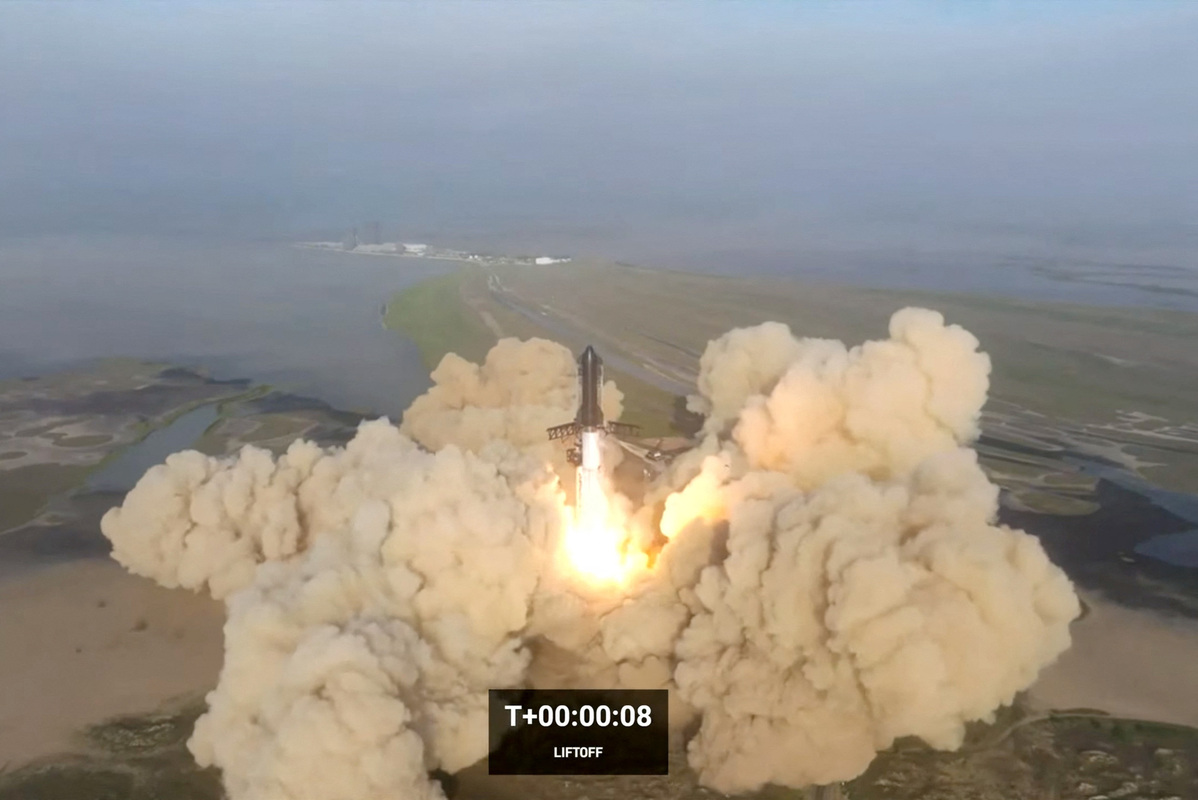Pushing the boundaries for space exploration


SpaceX's heavy-lift launch vehicle, Starship, exploded about four minutes into its first orbital test flight last week.
The reusable rocket is designed to carry people and cargo to Earth orbit, the moon and Mars, and has a payload capacity of more than 100 tons. The Starship was the largest rocket launched by humans after the Cold War, with the strongest carrying capacity and the most innovative way of replenishment and recovery.
Despite the explosion, the Starship was the first to use the newly developed Raptor liquid-oxygen-methane engine, and it also applied a breakthrough design with 33 parallel engines.
Although the launch failed, the test results will have proved valuable, and important lessons can be learned from them to prepare for future launches. That the Starship did not blow up on the launch pad at the Starship Base in Houston was already regarded a success by some experts.
Being able to push such a behemoth off the ground without major problems for almost three minutes, and to test 33 of the new engines in parallel without them ever being tested before can be seen as a remarkable success.
Since SpaceX sets very bold experimental targets, everybody knew beforehand that a successful launch was highly unlikely.
Space technology has always been pursued through trial and error.

































